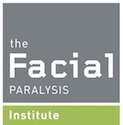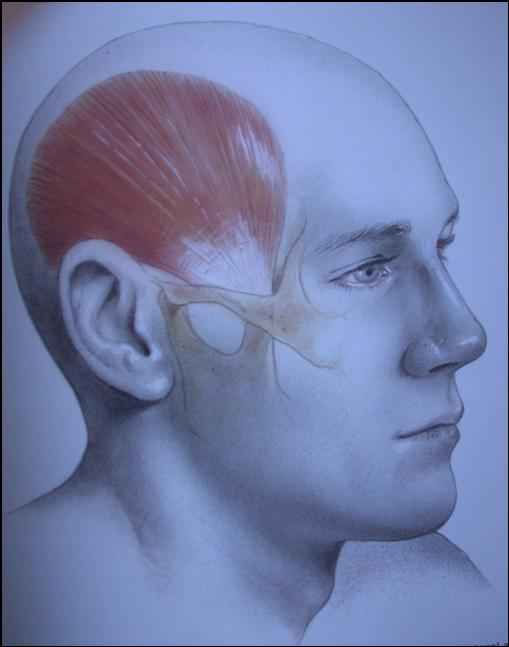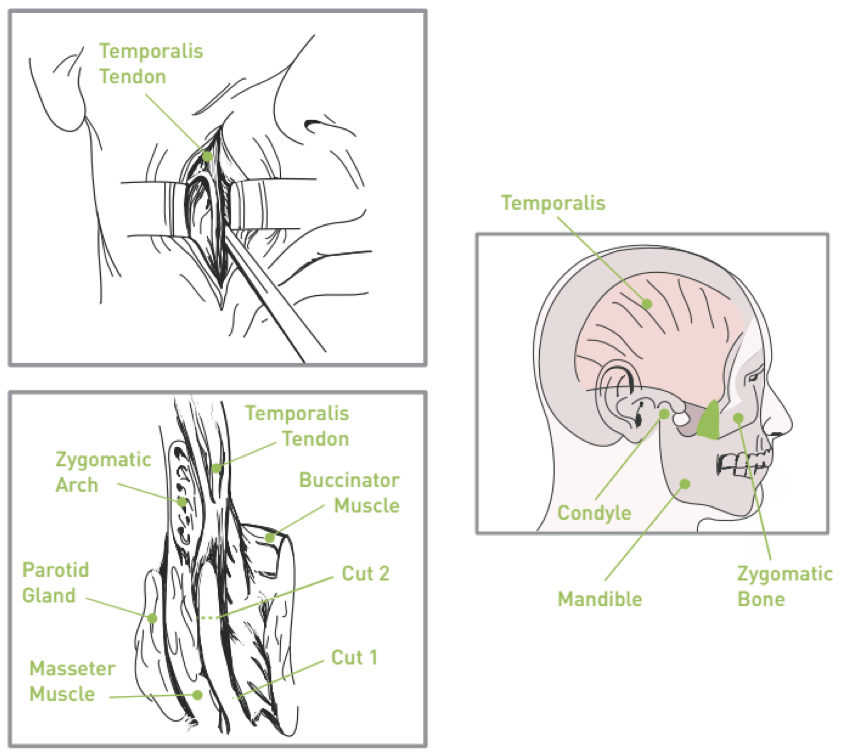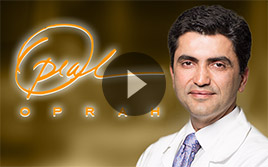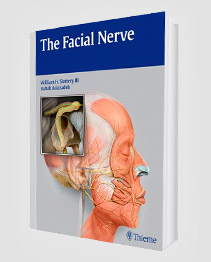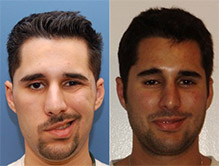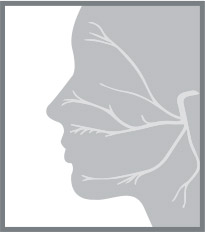Temporalis treatment involves an incision into the temporalis muscle, between the lip and cheek. Next, the tendon and bone are attached to muscles at the corner of the mouth to enhance facial symmetry.
Following temporalis treatment, neuromuscular retraining (NMR) may be required. During NMR, a patient meets with a physical therapist and learns how to move the temporalis muscle once again. This allows a patient to regain the ability to use the temporalis muscle properly.
Is Temporalis Muscle Pain Common After Treatment?
Patients may experience some side effects after a temporalis muscle transfer. Mild to moderate jaw discomfort can occur following a Facial Paralysis Temporalis Muscle. However, this discomfort generally subsides shortly after treatment. Patients who experience severe side effects that linger for weeks or months following a temporalis transfer should consult with their doctor.
What Are the Long-Term Results of Temporalis Muscle Treatment?
Temporalis transfer has been shown to help patients over the age of 55 alleviate long-standing facial paralysis. It can also provide a viable alternative for patients who are ineligible for cross-facial nerve grafts or other advanced Facial Paralysis Temporalis Muscle treatments. Also, temporalis transfer performed via a facelift technique can deliver long-term results.
What is Temporalis Tendon Transfer?
Muscle Transposition Techniques
Indications:
- Long standing facial nerve paralysis (FNP) (> 2yrs)
- Loss of multiple cranial nerves
- Loss of distal FN stump or atrophy of facial muscles
Muscle Sources:
- Temporalis
- Masseter
- Digastric
With a postoperative facial NMR program in physiotherapy, temporalis muscle transfer patients can restore natural facial movement after the Facial Paralysis Temporalis Muscle treatment. In the primary stage of exercises, most patients can regain voluntary control of their temporalis muscle.
The second stage in which patients are encouraged to obtain the newly learned movements to a state of automatic function in normal facial expression is less predictable. Therefore, muscle transfers may offer only minor advantages over static suspension procedures. In addition, a gracilis muscle transfer to the trigeminal nerve can provide predictable facial movement in contrast to a temporalis transfer.
Patient satisfaction following a temporalis tendon transfer has been shown to be relatively high in several research papers. In a study published in Archives of Facial Plastic Surgery, the mean score of patients who underwent a temporalis transfer was 8.5 out of 10). Four patients in the study were graded as excellent to superb, and three were rated as having good postoperative results.
Furthermore, the facial movement of patients in the study was evaluated. It ranged from 1.6 to 8.5 mm, with mean movement of the oral commissure of 4.2 mm. And, one patient developed postoperative salivary fluid collection that required drainage.
Muscle Transportation Techniques: Temporalis Muscle Transfer
- Non-spontaneous dynamic reanimation
- Good vector control of smile
- Does not interfere with potential native nerve regeneration
- Dynamic smile can look artificial4
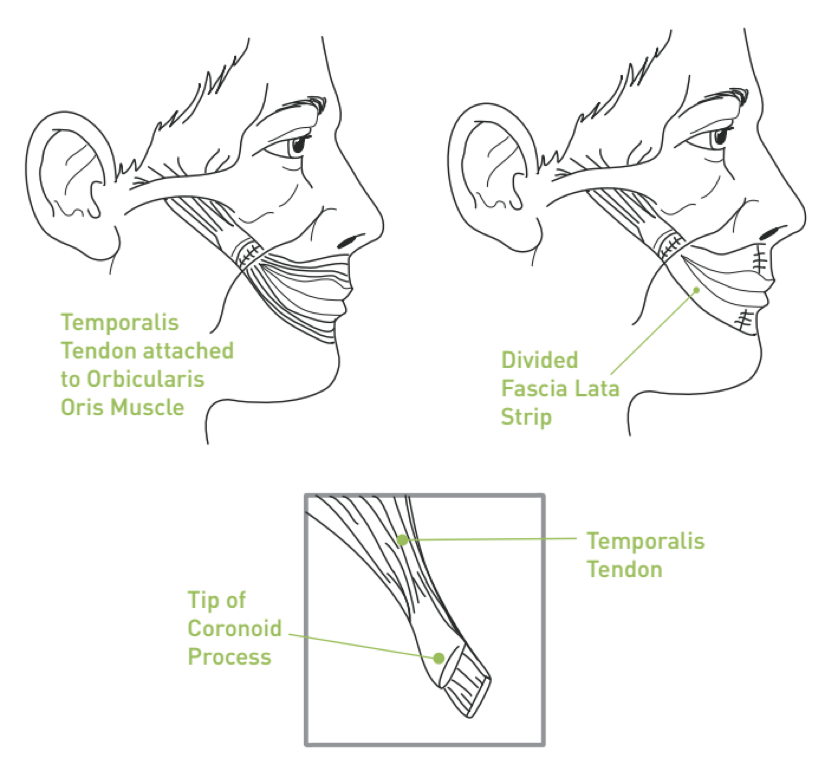
Before & After Temporalis Tendon Transfer
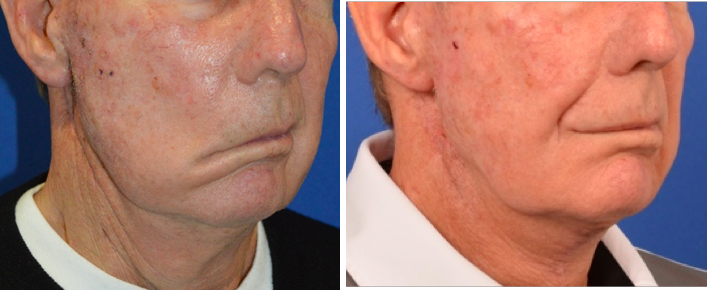
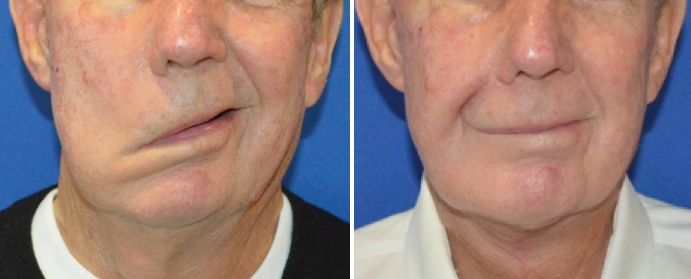
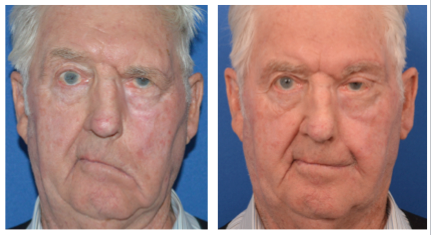
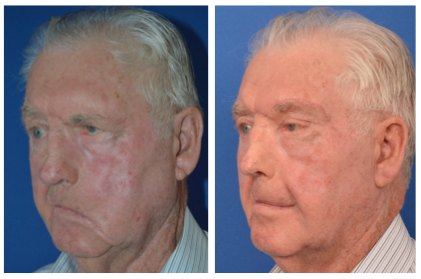
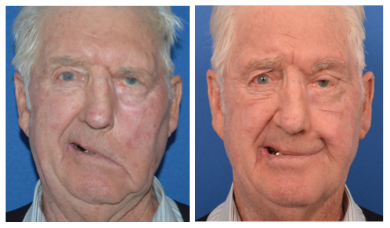
Summary
A Facial Paralysis Temporalis Muscle treatment can deliver exceptional results when it is performed by a trained professional. Dr. Babak Azizzadeh of The Facial Paralysis Institute is a globally recognized facial plastic and reconstructive surgeon who uses state-of-the-art techniques to treat facial paralysis. He can evaluate a patient dealing with facial paralysis symptoms and determine if a temporalis transfer or other treatment options can be used to correct these issues.
Dr. Azizzadeh is available for in-person and virtual consultations. To learn more or to schedule a consultation with Dr. Azizzadeh, please contact us online or call us today at (310) 657-2203.
NERVE INJURY
See the Results of Facial Paralysis Surgery
Request your consultation with Dr. Azizzadeh today
Call us at (310) 657-2203 to schedule an appointment.
Schedule a Consultation